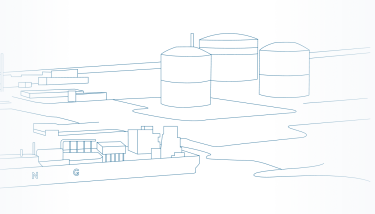What is LNG?



LNG (liquefied natural gas) refers to natural gas transformed into a liquid state.
To pass from a gaseous state (its initial state at the time of extraction) to a liquid state, the gas must be cooled down to a temperature of between - 161°C and -163°C.
Liquefaction plants located in countries where fossil fuels are present liquefy the gas (Algeria for example).
Once in this liquid state, liquefied natural gas (LNG) is 600 times smaller in volume than in its gaseous state and can therefore be transported by ship and sent to gas-consuming countries (this is the case for France, for example).
What are the particularities of LNG?
When it is transformed, carbon dioxide (CO2), one of the main greenhouse gases, is removed from natural gas. Nitrogen oxide (NOx) is also extracted in order to produce LNG. The main purpose of these purification processes is to make it even non-toxic and less polluting.
Although this is a fossil fuel that can be compared to oil or coal, LNG is considered as a clean source of energy. The low quantities of CO2 that it releases make it less polluting than other fossil fuels.

To be transported in a truck or by sea on huge LNG carriers, LNG is stored in thermally insulated tanks to maintain the natural gas in liquid form at -160°C. In a liquid form, 600 m3 of gas only take up 1m3 of space
What difference is there between gas and liquefied natural gas?
Gas is transported via a gas pipeline (a huge non-mobile infrastructure) in its gaseous state whereas liquefied natural gas is transported in a liquid state by ship, truck or train, giving it great flexibility in terms of transport and supply coming for any producing country.
LNG, today’s energy, bio-LNG, tomorrow’s energy
Even if LNG still comes from natural fossil gas, LNG also has it renewable equivalent. Based on biomethane liquefaction (produced from household waste), bio-LNG is in its infant stages in Europe.
For further information
How is LNG used?
An LNG terminal’s main function is to receive LNG, temporarily store it, regasify it and add an odour to it.
Let’s look more closely at the LNG’s journey from the time of extraction to the time it arrives at our LNG carrier terminals.
